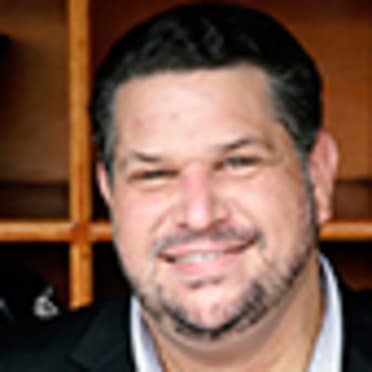Bochy at helm, these are Rangers' biggest needs
Expectations were high in Texas after the Rangers spent more than a half-billion dollars on free-agent contracts last winter, yet the club lost 94 games in 2022.
The disappointing season led to the dismissal of longtime president of baseball operations Jon Daniels, elevating general manager Chris Young to the role of top decision-maker.
That was just the beginning for the Rangers, who announced Friday that they had hired three-time World Series champion Bruce Bochy as their new manager, making it clear that the expectations for 2023 will be even higher than they were this year.
Martín Pérez and Matt Moore are two of the club’s biggest free agents this offseason, and while bringing both pitchers back would seem to be a priority for Texas, the pitching staff -- which ranked 12th in the American League and 22nd in the Majors with a 4.22 ERA -- needs more than the return of the two left-handers to make some noise in 2023.
If last offseason’s spending spree wasn’t enough of a sign that the Rangers were ready to contend, Bochy’s hiring is a clear indication that Texas expects to be in the postseason mix next season and beyond.
In August, owner Ray Davis said the club needs “a couple of front-end starters” and “a middle of the lineup bat.” Those won’t come cheap, and after shelling out more than $500 million to free agents last winter, Davis said, “I don't plan on spending as much money as we did last season, but we plan on spending some money.”
Here are three things the Rangers must address this offseason to meet those rising expectations:
Address the starting rotation
Pérez’s return would be a good starting point after the 31-year-old produced a career year, going 12-8 with a 2.89 ERA over 196 1/3 innings. He’ll cost significantly more than the one year and $4 million he signed for last winter, but both sides have expressed a desire to continue the relationship, so this one could get done soon.
Beyond Pérez, Jon Gray pitched well when he was healthy, posting a 3.96 ERA in 24 starts in the first year of his four-year, $56 million pact. He was on the injured list three separate times for non-arm injuries, and the Rangers have confidence that he will be able to carry a full workload in 2023.
The rest of the rotation? Well, that’s where the problems set in. Dane Dunning showed enough that he can occupy a spot in the back of the rotation, but Glenn Otto and Taylor Hearn combined to make 40 starts, while 11 other pitchers started a total of 37 games.
Adding a bona fide ace to the top of the rotation would push Pérez and Gray down into Nos. 2 and 3 roles, though the Rangers could even think bigger and pursue two top arms.
Clayton Kershaw’s name figures to be mentioned as a possibility, as the annual rumors of the Dallas native coming home will continue to swirl. Other top free-agent arms include Carlos Rodón, Justin Verlander, Chris Bassitt, Tyler Anderson and Nathan Eovaldi, another Texas native who might be intrigued by a homecoming.
The most notable name to watch, however, is Jacob deGrom, who is expected to opt out of his contract and become a free agent. At the age of 34, deGrom won’t require a seven- or 10-year deal like the ones Texas gave to Marcus Semien and Corey Seager, respectively, but it will likely take an average annual value of more than $40 million over four or five years to land the two-time National League Cy Young winner.
Could the Rangers sign deGrom? Or might they opt to lock up a pair of No. 2-type starters to provide depth to the rotation? One way or another, the rotation needs to be the team’s top priority.
Add an outfield bat
Texas’ collective outfield OPS of .641 ranked 14th in the AL, more than 50 points lower than the league average. It’s fun to imagine the damage Aaron Judge could do in Arlington -- after all, he did hit his 62nd home run there -- but the Rangers figure to spend the bulk of their money on pitching, making the slugger an unlikely target.
Adolis García can fill either center or right field, while Leody Taveras showed enough to warrant at least a part-time role.
A whopping 13 players saw time in left field throughout the course of the season, though none had more than 106 at-bats there. Those at-bats weren’t particularly productive, either; the Rangers’ .508 OPS in left field ranked last in the AL, nearly 200 points below league average.
Adding an outfield bat such as Andrew Benintendi, Mitch Haniger or Joc Pederson would help lengthen the lineup, providing another weapon to go along with Seager, Semien, García and Nathaniel Lowe.
Monitor the trade market
Addressing your needs through free agency can get costly, and after making their big splash last winter, the Rangers know that as well as anyone.
Texas has six prospects in MLB Pipeline’s Top 100 and a farm system that has climbed from No. 24 to No. 6 in MLB Pipeline’s overall farm system rankings in just two years. There is plenty of prospect capital from which to deal if the opportunity presents itself.
That’s not to suggest that Young should mortgage the future in an effort to reach the postseason in 2023, but should free-agent rotation or outfield options not match up, perhaps Young can look to the trade market for a starter (Blake Snell? Pablo López?) or outfielder (Bryan Reynolds? Ian Happ?) to address those needs.
